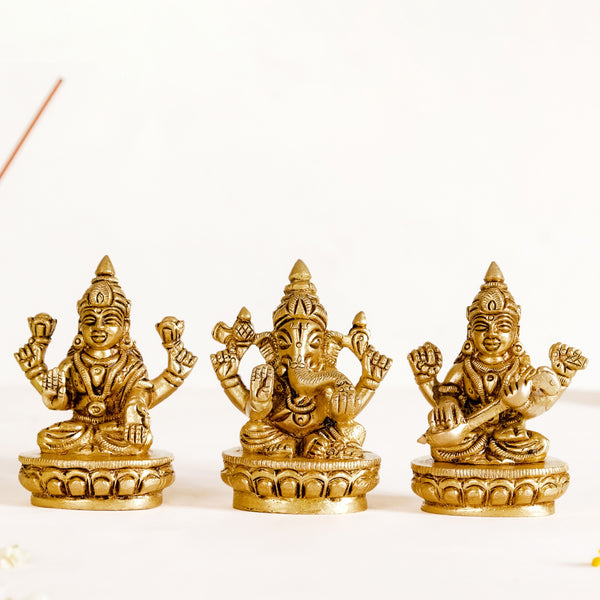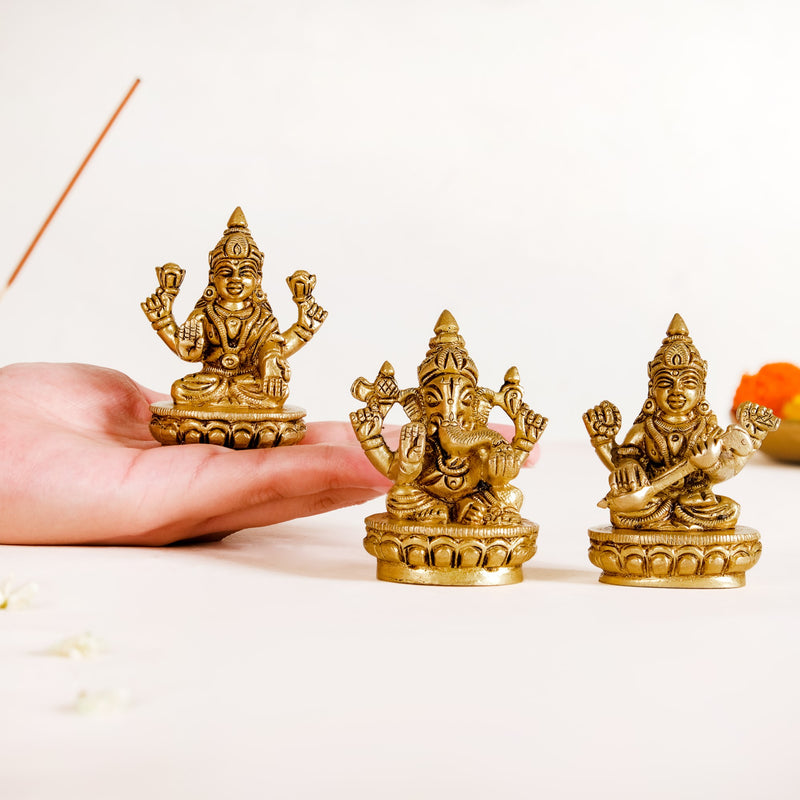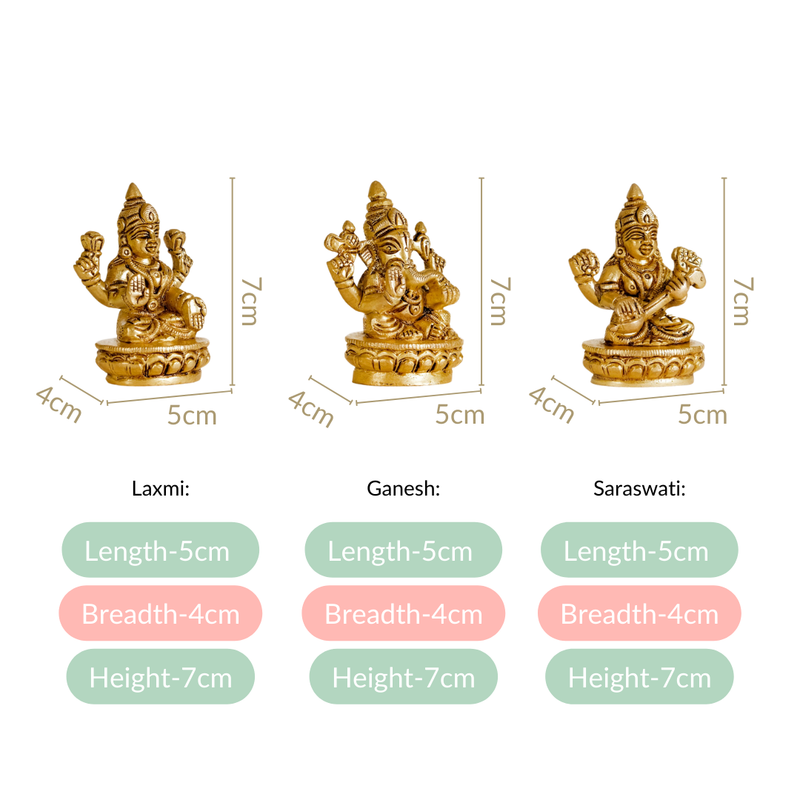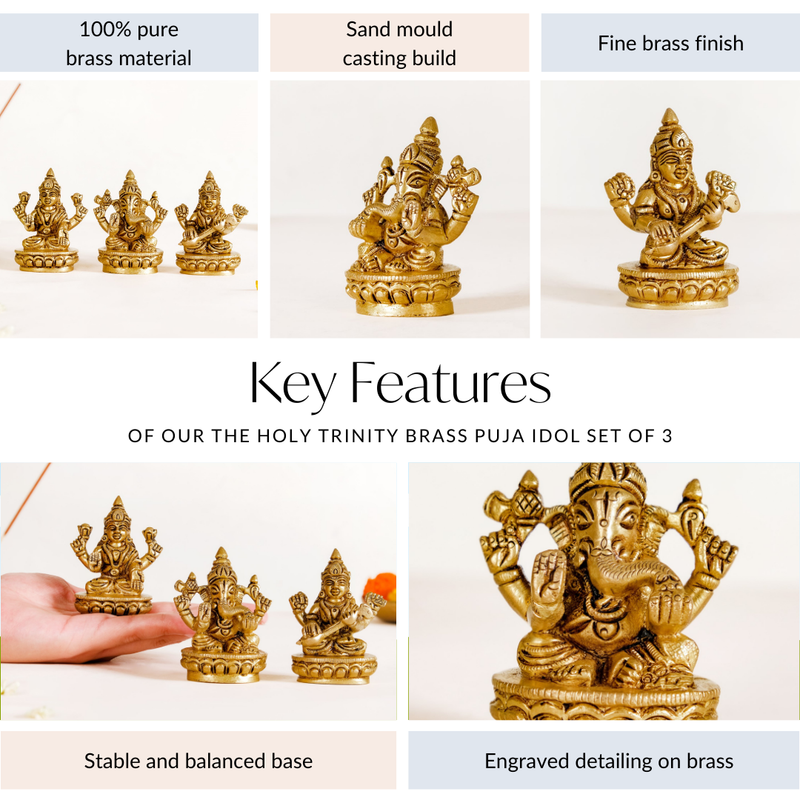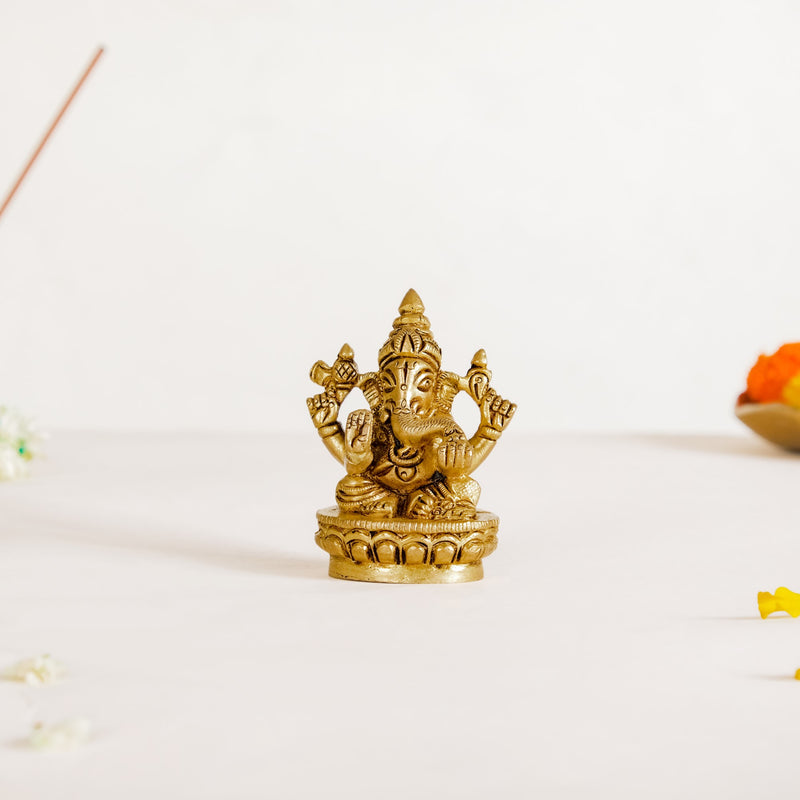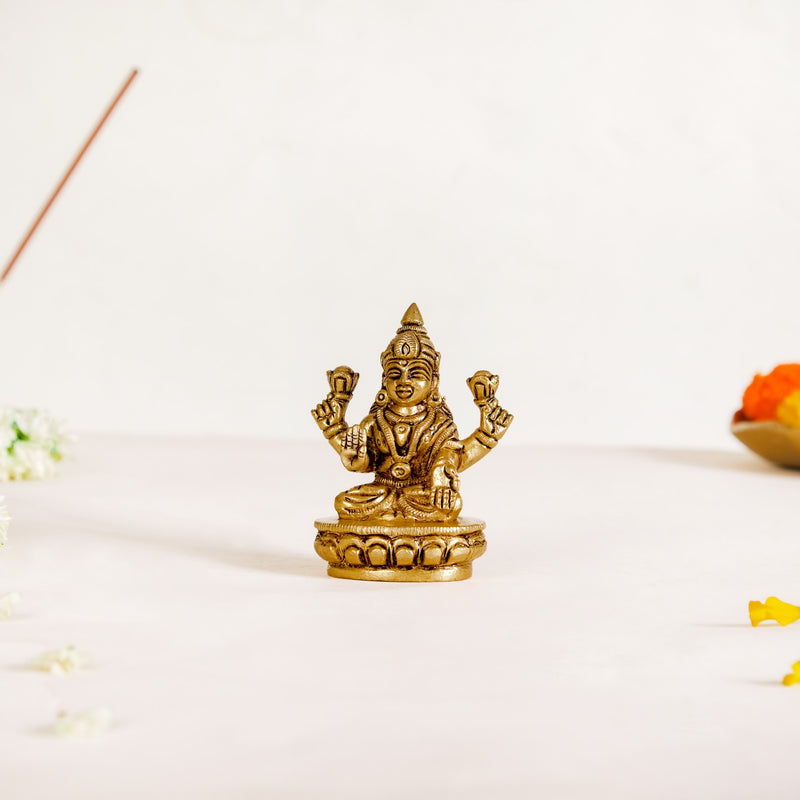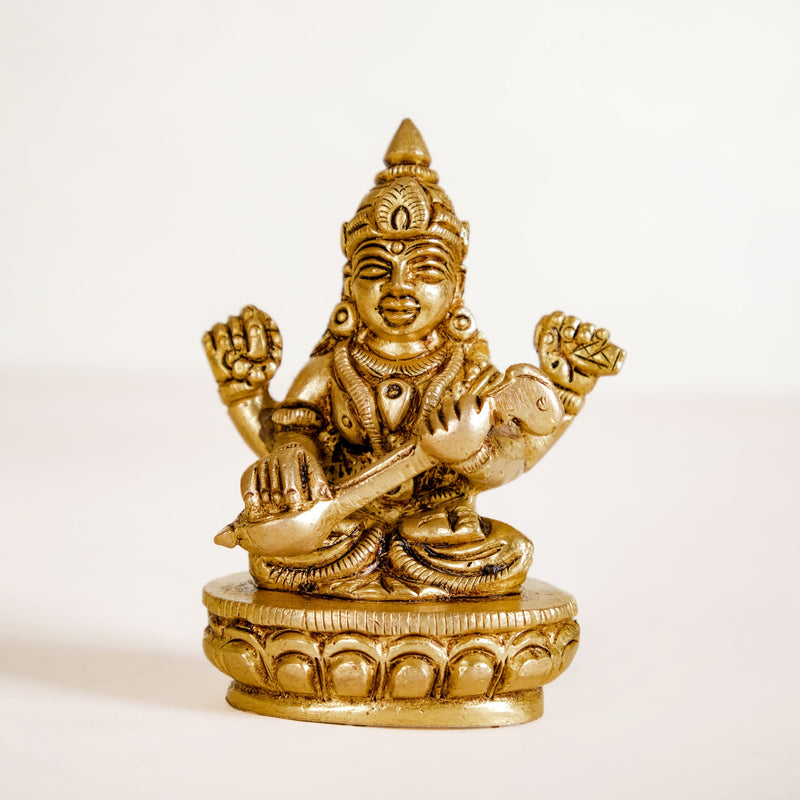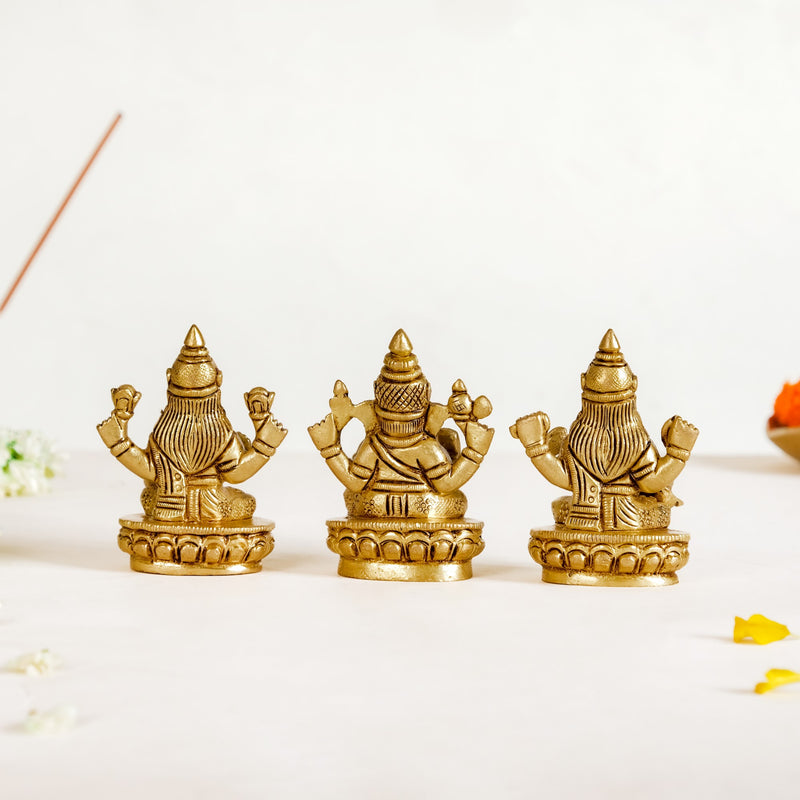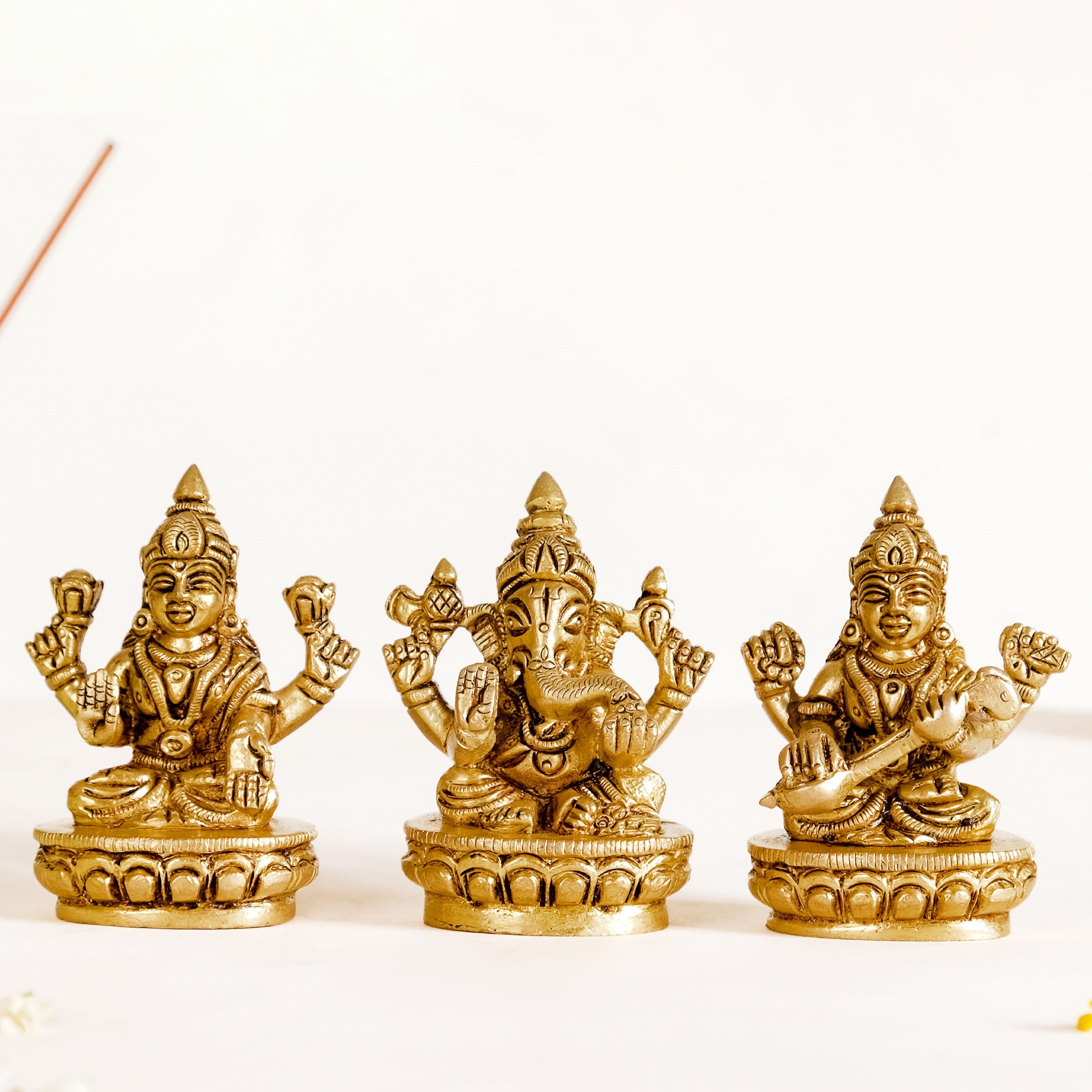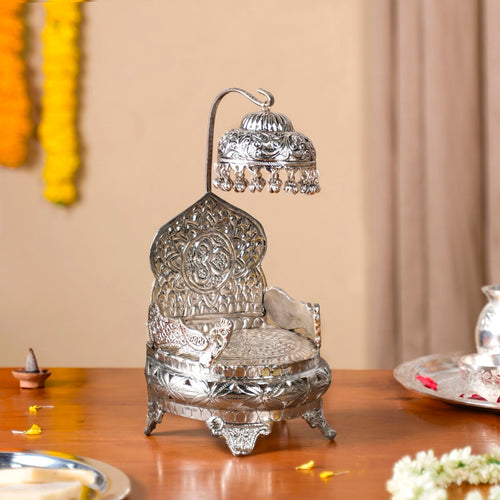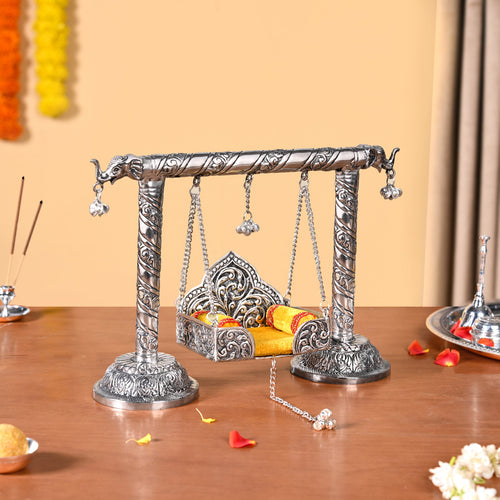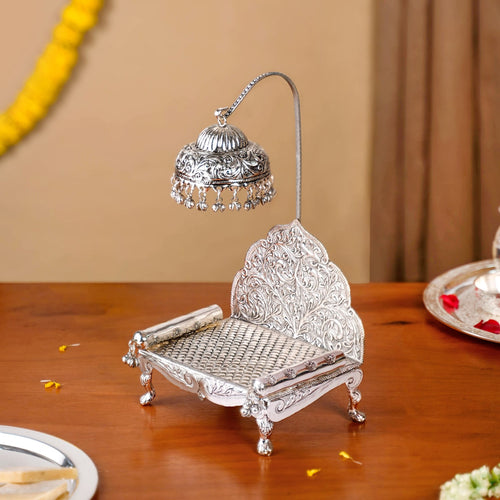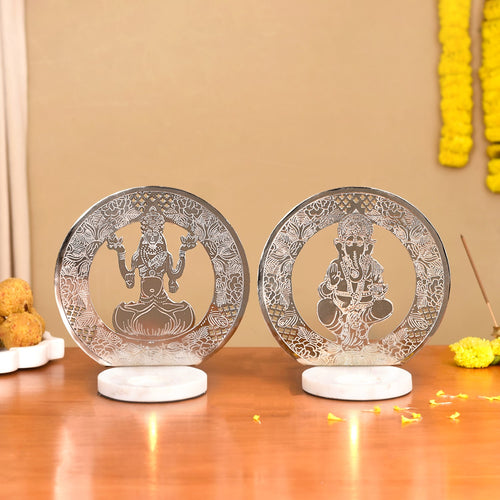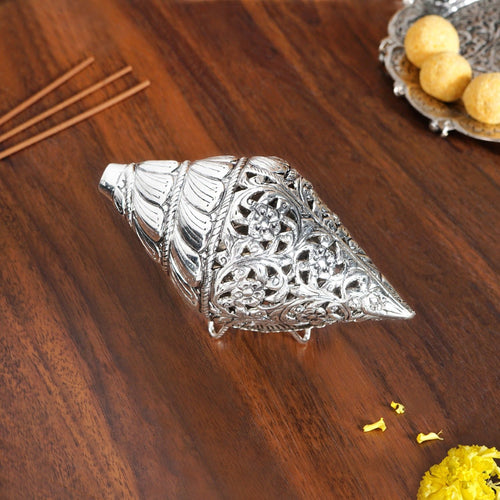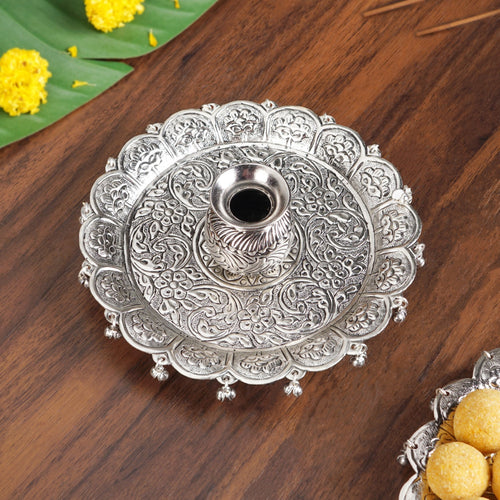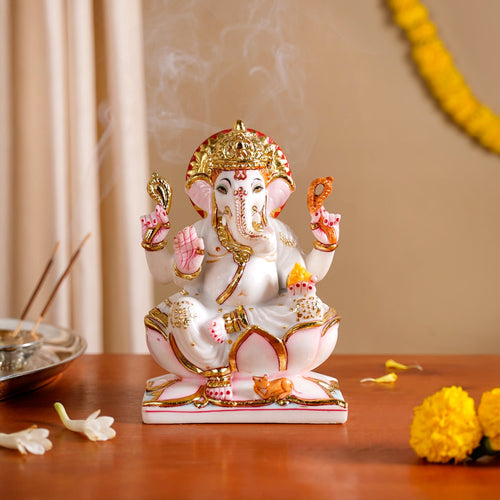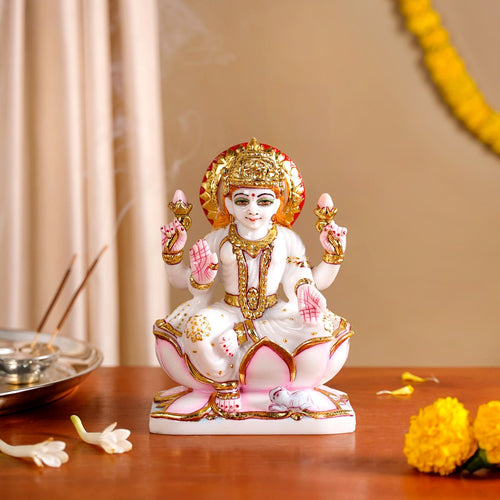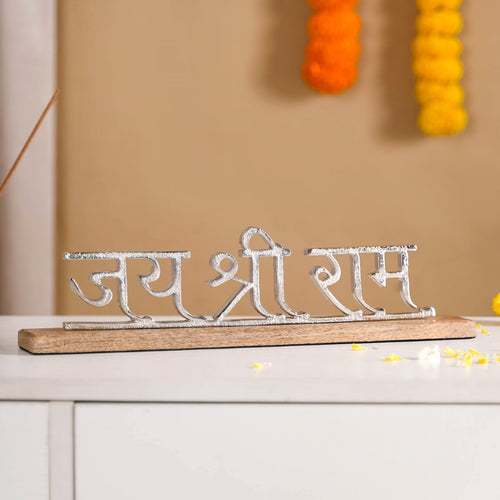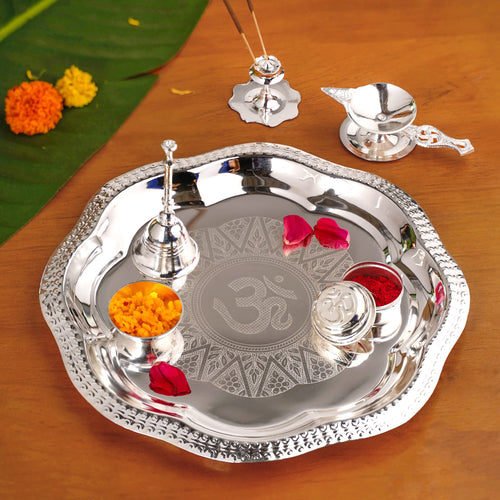Total Price
ADD TO CART
Frequently Asked Questions
What is the historical significance of brass in crafting religious idols?
Brass has been historically significant in the crafting of religious idols due to its durability, ease of casting, and ability to hold intricate details. Its golden hue is also associated with divinity and purity in many cultures.
Are there specific times or days recommended for worshipping these brass idols?
Certain days are considered more auspicious for the worship of these deities. Ganesh is commonly worshipped on Tuesdays and during Ganesh Chaturthi, Laxmi on Fridays and during Diwali, and Saraswati on Thursdays and during Vasant Panchami.
How does the symbolism of each deity's attributes enhance their significance?
Each deity's attributes are rich in symbolism: Ganesh's elephant head signifies wisdom and understanding, Laxmi's lotus flower represents spiritual enlightenment and purity, and Saraswati's veena denotes the arts and sciences. These attributes collectively underscore their respective domains of influence.
Is there a particular order in which the brass idols should be placed or worshipped?
Yes, traditionally, Ganesh is placed first, followed by Laxmi and then Saraswati. This arrangement symbolises the removal of obstacles first (Ganesh), followed by the acquisition of wealth and prosperity (Laxmi), and finally the pursuit of knowledge (Saraswati).
Can these brass idols be used in public places like schools or offices?
Yes, these brass idols can be placed in public places like schools and offices to inspire a sense of spirituality and to invoke blessings for wisdom, prosperity, and success among the inhabitants or workers of these spaces.













